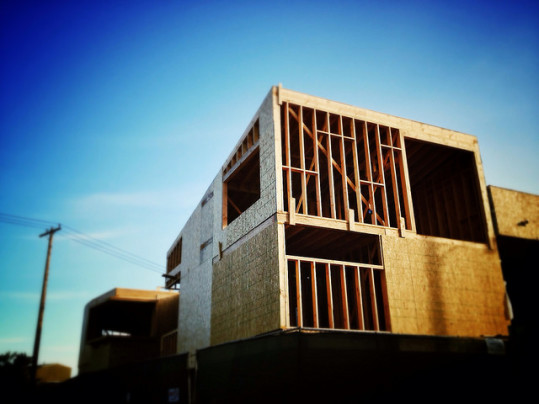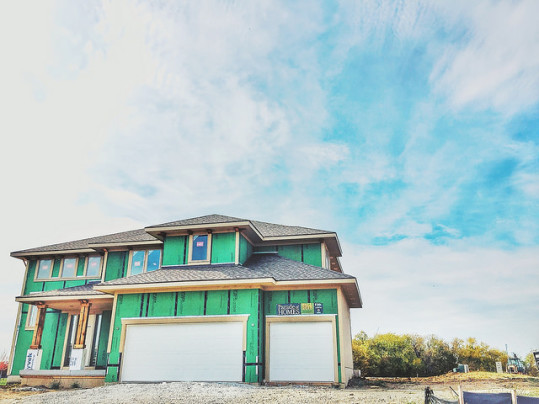Each month, Fannie Mae surveys Americans to get a feel for how people view the housing market, home prices, mortgage rates, and whether or not it’s a good time to buy or sell a home. According to the most recent results of their Home Purchase Sentiment Index, the end of summer coincided with a boost in optimism among potential home buyers, especially current renters. In fact, the increase in respondents who said they felt now was a good time to buy a house helped push the overall index to an all-time high. Doug Duncan, Fannie Mae’s chief economist, says the rise in optimism mirrors the decline in participants who feel home prices will continue to climb. “Details in the survey showed a meaningful pickup in the good time to buy component, especially from renter respondents,” Duncan said. “Additionally, perceptions of easing inventory helped boost the net share saying that now is a good time to buy, which is consistent with less bullish home price appreciation sentiment during the month.” In short, Americans feel like home price increases are beginning to slow, which makes this fall a good time to buy a home. More here.
Archive for October 2017
Vast Majority Of Renters Say They Want To Buy
Recent data from Fannie Mae shows a large majority of current renters intend to one day buy a house. In fact, just 18 percent of surveyed renters said they plan to remain renters forever. So what are some of the obstacles renters face when thinking about whether or not they should begin taking steps toward homeownership? Well, the upfront costs of buying a home were the top answer, with 45 percent of respondents citing coming up with money for a down payment and closing costs as the obstacle that keeps them from buying. However, an almost equal amount said they were most concerned about their credit. Other answers included insufficient income, too much debt, confusion about the buying process, and job security. In short, current renters want to buy but are worried they aren’t financially secure enough to become homeowners. And, though that is a legitimate concern, Fannie Mae also points out that their pervious research has shown many potential home buyers overestimate the size of the down payment they’ll need and are unaware of many of the programs available to help first-time home buyers reach their goal of becoming homeowners. More here.
Index Finds Homes Have Become More Affordable
ATTOM Data Solutions’ Q3 2017 U.S. Home Affordability Index looks at how affordable homes are based on the percentage of average wages needed to make a monthly payment on a median-priced house in 406 counties across the country. According to the results, affordability conditions improved, compared to the previous quarter, in 60 percent of all analyzed counties. That’s an encouraging trend for anyone thinking about buying a home this fall, as it means buyers can expect to find more favorable conditions than they did over the summer. Daren Blomquist, ATTOM’s senior vice president, said the improvement was brought on by decreasing interest rates. “Falling interest rates in the third quarter provided enough of a cushion to counteract rising home prices in most U.S. markets and provide at least some temporary relief for the home affordability crunch,” Blomquist said. “More sustainable relief for the affordability crunch, however, will need to be some combination of slowing home price appreciation and accelerating wage growth.” For example, since hitting bottom in 2012, home prices have risen 73 percent, while average weekly wages have only improved 13 percent over the same time period. More here.
Mortgage Rates Moved Slightly Higher Last Week
According to the Mortgage Bankers Association’s Weekly Applications Survey, average mortgage rates increased last week across most loan categories, including 30-year fixed-rate loans with conforming loan balances of $424,100 or less. Though the rate increases were small compared to the week before, they keep rates higher than they were last year at this time. Joel Kan, an MBA economist, told CNBC that mortgage rates rose based on recent economic news. “Rates moved higher over the course of last week, at least partially due to signs of stronger economic growth,” Kan said. “Four of the five mortgage rates that we track increased.” Still, despite the fact that rates are higher than one year ago, they remain well below historical averages and offer favorable terms to potential home buyers. Because of this, demand for home purchase loans is still five percent higher than last year at the same time, although refinance activity – which is more sensitive to rate fluctuations – has fallen year-over-year. The MBA’s weekly survey covers 75 percent of all retail residential mortgage applications. More here.
Green Home Construction Increasingly Common
Green-home features are becoming more popular among home buyers and it’s led to an increasing number of builders who say they’re incorporating green features into the homes they build. For example, the National Association of Home Builders’ Green Multifamily and Single Family Homes 2017 SmartMarket Brief surveyed builders to find out how many were using green-building techniques. According to their findings, one third of builders said green building makes up more than 60 percent of their portfolio. And the expectation is that the number should continue to rise in coming years. Granger MacDonald, NAHB’s chairman, says green homes are here to stay. “These findings show that green building has become an established part of the residential construction landscape,” MacDonald says. “It is no longer a niche business; our members recognize the value of building green and are incorporating these elements into their standard business practices.” The increased interest is being driven by consumers who value things like energy efficiency and are looking for homes that create a healthier environment. Because of this, as awareness of these features grows, so will demand. More here.
What Is The Ideal Down Payment?
The results of a new survey show Americans prefer a 10 percent down payment when buying a house. The 2017 Mortgages In America Survey found it was the most popular option among young, middle aged, and older home buyers when asked to choose among down payments up to 30 percent. And it lines up pretty well with actual data. In fact, the average down payment in 2016 was 11 percent, with borrowers under the age of 35 putting down something closer to 8 percent. But, though Americans clearly prefer it, lower down payments come with tradeoffs. For one, if you put less money down upfront, you may have to pay private mortgage insurance, which can add to your monthly mortgage payment. Which means, though home buyers have options and won’t necessarily have to put 20 percent down on the house they’re buying, it is always a good idea to save up as much as possible, so you have a substantial amount to invest in your home. It’ll make you a more attractive buyer to home sellers, in addition to helping keep your mortgage payment more affordable. More here.
Inventory Of New Homes Rises In August
The number of new homes available for sale at the end of August was 3.6 percent higher than the previous month, according to new data from the U.S. Census Bureau and the U.S. Department of Housing and Urban Development. The improvement brings inventory to its highest level since May 2009. That’s encouraging news for home buyers, as a lack of homes for sale has been the primary factor pushing prices higher in many markets. As more new homes are built, however, buyers will have more homes to choose from and the extra supply will help moderate price increases and balance out the market. Still, despite the good news, the latest residential sales report also shows the number of new homes sold last month down 3.4 percent. According to Robert Dietz, the National Association of Home Builders’ chief economist, the decline may’ve been due to the recent hurricanes – and they may continue to affect upcoming data. “We may see more volatility in the next few months as communities affected by the recent hurricanes experience construction delays and other economic disruptions,” Dietz said. More here.







